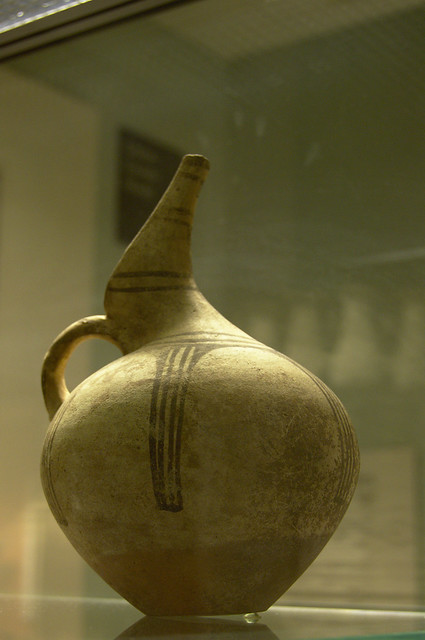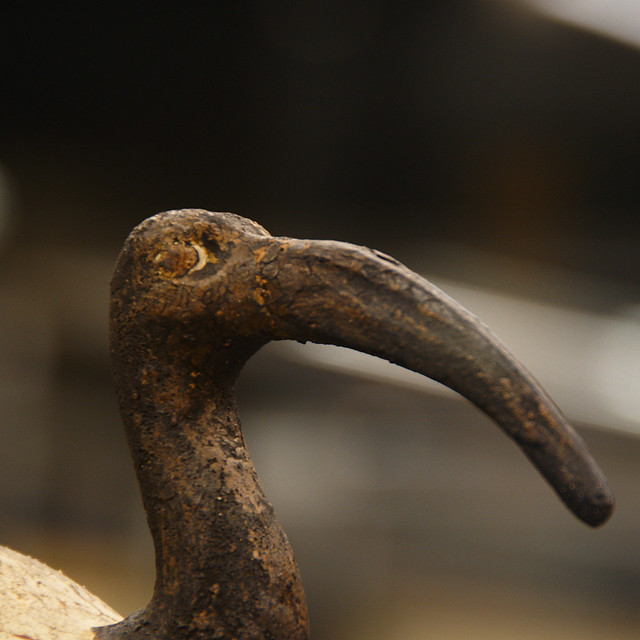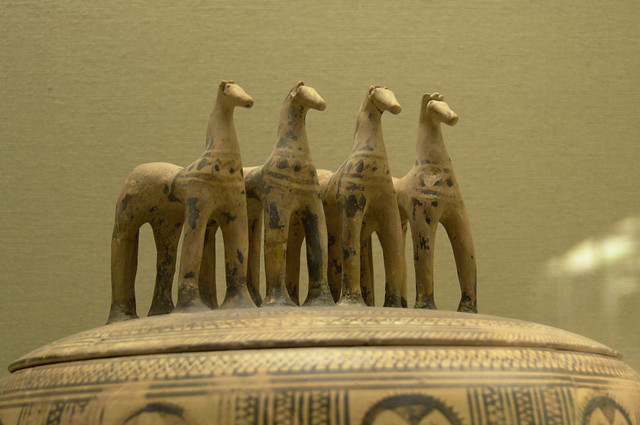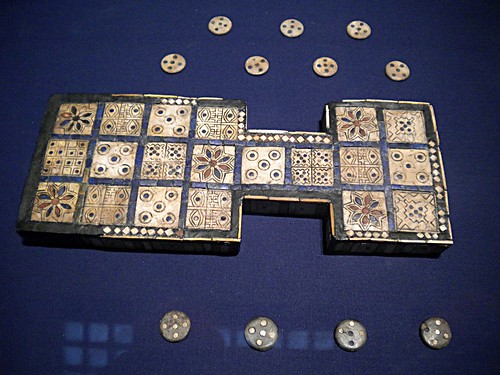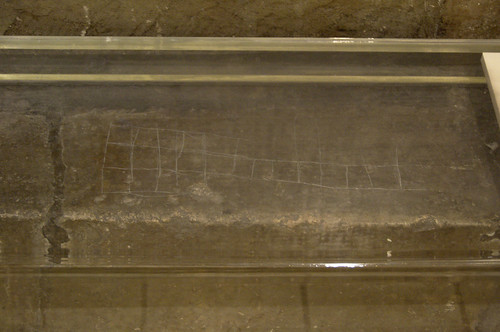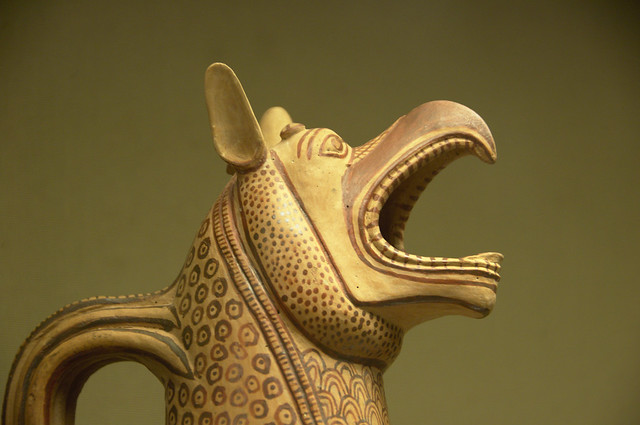The last talk in the Bloomsbury Summer School’s Cuneiform Study Day was about the ark tablet that Irving Finkel has recently published a book about. There was also a TV documentary about the discovery of the tablet, and the building of a boat using the information in the tablet as a starting point (which I’ve written about before). The talk was mostly unconcerned with the TV programme, but about halfway through Finkel did go on a digression about the awfulness of it (as he saw it) – the “turning it into ‘good’ TV” process made it shallow and theatrical in all sorts of ways he didn’t like. He did think the boat was cool, tho!
Finkel started off by giving us some context for Flood Stories in cuneiform texts (which is exactly what I complained the TV programme didn’t do). George Smith in 1852 was the first person to read a cuneiform tablet containing a version of the Ark Story. This was the first time it was shown that a Biblical story pre-dated the Bible. The impact of this in society at the time was huge (much larger than it would be today), as it’s such a fundamental Old Testament story. There are close & specific links between the story that Smith read and the Biblical version, too. One of these is the releasing of the two birds to see if there is any land yet. However the boat as described in that text is cubical, so those who were particularly upset said that showed it was all a coincidence. The tablet that Smith read is part of the Epic of Gilgamesh, and is actually one of the more recent cuneiform texts with a Flood Story. Since Smith’s discovery other (older) versions have been found. Although details differ, including the protagonist, they all share a common point that the gods had decided that the creation of humanity had been a mistake. The gods thus cause a flood to wipe them away, but one man is saved by one god warning him.
The new tablet that Finkel has translated & published dates to around 1800BC. It was initially brought to the British Museum along with various other bits & pieces by a man who’d inherited it from his father (who’d picked up these things on various trips). Finkel thought it was a letter at first glance, but then when he read the first lines it was clear that it was a Babylonian Flood Story and it didn’t match the ones he’d seen before. Which was very exciting, but sadly the chap who owned it took it away again and it was a while before Finkel had the chance to properly study it.
This version of the story includes a “How To” manual for building the ark. Unusually it describes a boat that is round – shaped like a coracle. Coracles are normally pretty small scale, but this one is much bigger. Finkel made the point that it didn’t need to go anywhere (coracles are normally propelled by oars, so it might be difficult to move a larger one) – for the occupants to survive the flood it only needed to float. The numbers and instructions in the text are surprisingly specific – not like mythological numbers generally are. If you calculate how much of the materials you would need to make a boat of that design the figures come out within 1% of those in the text. And the instructions match up well with those in a book published in the 1930s (AD) talking about coracle building in the more modern Middle East. So this is effectively the story being interrupted for an (accurate) info-dump about boat building. Finkel pointed out that this would’ve been of interest to the audience for the story, particularly if it was told orally (as it probably was) – there would be many fishermen and other river-goers who might want to know just how big this big boat was and so on. (It made me think of things like Tom Clancy’s novels where the story gets interrupted for a loving description of exactly what sort of gun is being used).
After his digression about the TV programme Finkel talked about his interest in the broader picture into which this tablet fits. Primarily – how did this ancient Mesopotamian legend end up retold in the Jewish Bible? Clearly the Exile of the Jews in Babylon must have something to do with it. Judea is invaded twice by Nebuchadnezzar, and this is documented in both the Old Testament and in the bureaucratic records of the Babylonian Empire. The texts corroborate each other to a pretty high degree – for instance there are people named in the text of the Hebrew Bible who are also mentioned in Babylonian documents. The second invasion of Judea is when Jerusalem was sacked and the bulk of the Jews were forcibly marched to Babylon. Finkel talked a bit here about what it must’ve been like for the Jews – his analogy was that in terms of culture shock it must’ve been much like it was for the rural Eastern European Jews who emigrated to New York in the 1930s.
The Book of Daniel talks about the young nobles of the Judeans being instructed in the language and literature of the Babylonians during the exile. This was a policy on the part of the Babylonians intended to indoctrinate the Judean elite with Babylonian culture, so that they would be less likely to rebel and instead be assimilated. Evidence from the Bablyonian side of the education of the Judeans includes a tablet which lists the Aramaic alphabet in cuneiform signs. The cross-cultural mixing went both ways – written around this time is a Babylonian tablet musing about monotheism and postulating that all the other gods are manifestations of Marduk. I.e. that Adad is “Marduk of the Rain” and so on.
At the time one of the ways students learnt to read & write was copying out set texts. From student tablets that have been found archaeologists have some idea of the school curriculum of the time that the Judeans were in Babylon. The stories they would’ve been copying included not only the Flood Story, but also one with a baby discovered in bulrushes and other legends of early rulers who lived unfeasibly long lives. And these all have parallels that end up in the Hebrew Bible.
This was a good talk to end the day on, and answered several of the things I was curious about after the TV programme. I intend at some point to read his book about the tablet, too. Overall this was a very interesting study day. Finkel is a very good speaker – my write-ups of his talks are sadly a rather dry rendition of the actual performance.
